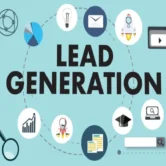
What metrics define successful brochure performance in tech sales?
1. Lead Engagement and Response Rate
A core metric for brochure performance in tech sales is how effectively it captures or influences leads. This is especially important in B2B scenarios where brochures are used for outreach, events, or follow-ups.
- QR code scans or link clicks embedded in digital/print brochures
- Email replies or contact form submissions triggered by brochure CTAs
- Demo requests or trial sign-ups traced to brochure distribution
- Time spent viewing or reading interactive PDF versions
- Download rate from hosted microsites or landing pages
2. Sales Conversion Influence
The best brochures drive real business outcomes. Measuring whether the brochure helps convert leads to opportunities or clients indicates its strategic impact.
- Opportunity-to-win ratio among prospects who received or referenced the brochure
- Sales cycle acceleration, where the brochure helped clarify features or shorten decision-making
- Proposal inclusion frequency (how often sales teams use it in RFP responses or pitch decks)
- Closed-won deal attribution where brochure assets were involved
- Client reference triggers, when brochures prompt prospects to request case studies
3. Content Relevance and Readability
Effective brochures must be clear, relevant, and well-targeted. These quality metrics ensure the content resonates with the audience and supports solution alignment.
- Bounce rate on brochure-hosting pages (for digital formats)
- Scroll depth or page completion rate in interactive PDFs
- User ratings or feedback from field sales or presales teams
- A/B testing results on different versions for headline, layout, or CTA effectiveness
- Industry targeting accuracy (how well vertical-specific brochures match buyer needs)
4. Distribution and Reach Metrics
To evaluate how well a brochure performs logistically, measure its actual reach across physical and digital channels. This helps assess whether it’s being used as intended.
- Number of brochures downloaded or printed by region or channel
- Distribution volume at trade shows, expos, or through partners
- Email open and attachment click rates when brochures are used in outreach
- Sales enablement system usage, tracked via tools like Seismic or Highspot
- Localization uptake, i.e., how many regional or vertical teams use tailored versions
5. Brand Recall and Positioning Impact
Brochures also contribute to broader brand perception and awareness. These qualitative and brand-linked metrics define how well the asset supports market visibility.
- Post-brochure brand recall in surveys or follow-up interactions
- Mentions or references during sales calls or inbound queries
- Social shares or reposts if the brochure is part of a thought leadership campaign
- Client testimonials or feedback referencing clarity gained from brochure content
- Analyst or media adoption, especially for solution brochures in emerging tech areas





